Grand Popo is a tourist region that is approximately two hours from Cotonou and is just below Togo. It is an area that stands out for its beaches, and is located on an arm of land between the Atlantic Ocean and the marshes of the Mono River. A region that will surely not leave you indifferent and where you can rest on its beaches and learn about the traditions and crafts of its people.
Originally, Grand Popo was a group of several villages with a sandy ravine separating the sea from the lagoon. It was the region of the Hula tribe, but with the arrival of the Portuguese, the first European colonizers to arrive in the area, came to name this region as Grand Popo. The origin of the name is unclear: some say it comes from the Yoruba language, one of the main tribes of Nigeria, where the name Popo means those of the west; others say that the term “Popo” comes from the names that Europeans gave to an ancient ruler called Kpokpo of Tado who was king of one of the cities in the interior of the country but who surely confused and for this reason, they called this region as Popo to say that it was of this king.
Although the origin of the name is not clear, what we do know for sure is that this area had a very important historical part since being located next to the shore of the Atlantic Ocean, there were different places where they kept the slaves they transported to Ouidah before they left for the New World. Today, you can still see the remains of these constructions as well as different colonial houses of Portuguese origin, the first to arrive in this area.
In Grand Popo we also find the mouth of the Mono River, known as “la bouche du roi”, which is an ideal place to observe waterfowl and navigate its mangroves. The delta that forms this mouth belongs to a protected area known as the Niger Delta Biosphere Reserve, with an area of more than 6,000 km2 where different marine species such as the Nile crocodile or turtles coexist, as well as different migratory birds that rest in their wetlands.
Grand Popo is also noted for its tradition. There, one of the most important festivals of the voodoo religion is celebrated with different celebrations, as well as other cultural events such as the Nonvitcha festival that takes place during Pentecost.
Today, Grand Popo is also home to the Mina ethnic group, who were formerly engaged in the palm oil trade but now make a living from traditional fishing and coconut harvesting. The landscape of this region is spectacular, with the mixture of the waters of the Atlantic Ocean and the Mono River, the hundreds of palm trees that you find next to the river, the different mangroves and islands where small villages live, the art of fishing used by its local fishermen and a laughing, humble and simple people who, they are sure to make this destination one of the most beautiful in Benin.
How to get there?
The Grand Popo region is very well connected between the main road from Cotonou to Lomé. Being next to the border, there are many ways to get there, making this area one of the most visited and easiest regions to stop off during your trip.
If you’re coming from Cotonou, you’ll find taxis heading to Grand Popo in the area next to Etoile Rouge Square. We paid CFA 2,500 per person for this two-hour journey. You will pass by the city of Ouidah (if you want to know what you can do in this historic city, click here); and you will continue on your way until you reach just the border with Togo, which is where the Grand Popo region is located.
If you go with a private car, remember that you will find a 400 CFA toll to access Grand Popo. You will have to drive along the RNIE1 road, and just after passing by Lake Aheme and reaching the village of Comè, continue on this road. After crossing the Mono River Bridge, you will have arrived in the city of Grand Popo, which is located right next to the Atlantic Ocean.
This city is the last stop you will make if you later cross Togo (or the first if you come from the neighboring country), since a few kilometers away we find the border point of Hillacondji. The main cities of these two countries (Lomé on behalf of Togo and Cotonou on part of Benin) are located at a distance of 150 kilometers that you can travel in approximately 3 hours due to the volume of traffic you will find there. So, Grand Popo can be a great stop to make this journey in two parts and discover this beautiful region of Benin.
What to do in Grand Popo?
The Grand Popo region stands out for its beaches but also for its culture, fishing and its historical past. If you spend a few days there, we recommend that:
– Navigate the Mono River and reach the mouth, known as “La bouche du Roi”
This is one of the main activities to do if you go to Grand Popo. This region is located right next to the mouth of the Mono River, creating a system of river wetlands formed by different natural formations such as Lake Aheme, the Ahô Canal and its entire coastal lagoon. In its surroundings, you will find a landscape full of palm trees and small islands. An ideal place to travel slowly by canoe and discover the hidden treasures you will find.
All this area is protected by the Niger Delta Biosphere Reserve and you can find different waterfowl or other animals such as Nile crocodiles or sea turtles. The mouth of fresh water into salt water allows you to see beautiful landscapes by the sea. In the channel we find different islands and mangroves where many fishermen live and where you can visit traditional villages to see how they make artisanal palm wine and how they live next to this mouth.
The final part of the mouth is called “la bouche du roi”, erroneously translated from the French who arrived and heard that this area was “a boca do rio”, a Portuguese expression to exemplify that mouth that reached the sea.
You will find many people who will offer you to do this excursion, as it is one of the most popular in the area. We did it with Mathias, the owner of our accommodation, who took us by car along the Atlantic Ocean until we reached a point where we boarded some canoes to travel the last kilometers of the Mono River. It cost us 10,000 CFA with lunch included on a small pristine islet on the Mono River. An unforgettable experience!
– Relax in some of the accommodations located on the seafront
Grand Popo is a city facing the Atlantic Ocean. For this reason, you will find different accommodations that are located next to the beaches and where you can rest and relax. Think, however, that in the waters of the Gulf of Guinea we find many currents and, therefore, bathing is not advisable at all.
However, many of the accommodations have tables, hammocks and shaded places to rest while watching the beach and the Atlantic Ocean. A brief rest that will only be broken by the presence of different vendors (few compared to the beaches of Kenya or Mozambique) who will offer you meals, souvenirs or excursions.
– Know the historical past that this region had with the slave trade and the trade with the Portuguese
Grand Popo is a region that, unfortunately, has a dark history behind it related to the slave trade. This region was first colonized by the Portuguese, who when they arrived they found different ethnic groups that were mainly engaged in the palm oil trade. Once they settled and began to call this region Grand Popo, they started one of the most tragic businesses in African history: the slave trade.
Following the line of the Mono River and its strategic area next to the Atlantic Ocean, in Grand Popo and some nearby towns such as Aného or Agbodrafo, in Togo (if you want to know more about this area, click here), the slave trade began to develop. In some houses of Grand Popo, they kept slaves that would later be sent to Ouidah or Agbodrafo to be transported in ships, as if they were commodities, to the New World and thus be able to cover the labor needs needed by the colonizing countries.
This business, in which many local tribal groups also participated, capturing their enemies and selling them to the colonizers, was one of the darkest undertakings in African history, especially on the coasts of the Gulf of Guinea. In Grand Popo, although already in very bad condition, you will find some colonial buildings from that time and that were part of this sad episode that began in the fifteenth century with the arrival of the Portuguese.
– See how turtles lay their eggs on the beaches of Grand Popo
Between the months of August and March, you can observe the movements of the turtles that come to lay their eggs on the beaches of Grand Popo. The months of November, December and January are the months with the highest presence of these animals next to the Atlantic Ocean. In fact, on January 8 there is the national turtle festival celebrated by the local NGO Nature Tropicale where you can participate in the release of turtle babies after incubation of eggs saved from endangered nests on the beaches. When we visited Benin, during the month of May-June, we could not see the sea turtles.
– See the art of fishing from local people
In Grand Popo you will be captivated by the fishing technique used by local fishermen. You will be able to see their movements again and again, and you will never tire of seeing this way of fishing that we could define as a work of art.
The fishermen, some of them in small wooden canoes and others located on the banks of the Mono River or the mouth “la bouche du roi”, carry handmade nets that flip over their heads and after a few movements they throw it in a certain style so that this net opens and falls into the water. Afterwards, they collect the net in order to catch the different fish that have fallen into their trap.
This network launch is repeated constantly, changing positions several times. Watching this type of fishing leaves you mesmerized by its beauty and its art, since the nets go far creating different very beautiful photogenic scenes.
The Grand Popo region is a mostly fishing region. Apart from fishermen fishing in the fresh water of the Mono River wetlands; You will find other fishermen who go out to sea with their wooden boats decorated with brightly colored images that also make drawing these vehicles an art.
Finally, being a town that lives from fishing, you can also find many people who fix or build the nets that are the main tools they have for fishing. Grand Popo is a region that lives focused on water, and from where you can observe the magnificent art of fishing of the local people.
– Attending a traditional celebration in a village in the Grand Popo region
In Grand Popo, as in many regions of Benin, you can participate in many traditional celebrations. Voodoo religion is one of the official religions of the country and in many villages dances and traditions are held to contact the afterlife. On January 10, the national voodoo festival is celebrated, one of the most important festivals in the country, and where you will surely soak up everything related to this mysterious religion. In addition, the centennial Nonvitcha festival, a traditional festival of the Xwla community to celebrate the unity and brotherhood of the Xwla and Xweda peoples, is also celebrated during the day of Pentecost. Nonvitcha literally means “united brothers” in the Xwla language.
Where to sleep in Grand Popo?
Grand Popo has a wide range of accommodation. Among these, we highlight:
– Auberge Grand Popo: Old colonial building where there was a courthouse and a prison, this beachfront accommodation has double rooms in a wonderful setting. It also has restaurants and is a good starting point to discover the different voodoo celebrations and get to know the area. For more information, you can click here.
– Chez Mathias: Located right on the beachfront, that’s where we stayed. It has different bungalows for 2-3 people and places to put tents. Mathias, its owner, is a dreadlock man who also organizes excursions. The meals at the restaurant are also delicious, where we highlight the prawns with curry sauce. One of the best options to be in Grand Popo with great value for money and an ideal place to discover its surroundings. For more information, you can write a Whatsapp to its owner on this phone: +229 97 18 22 46.
Our route
DAY 1: After sleeping in Abomey and a last intense night with the voodoo initiation ritual of different young people that we saw in a village, it was time to say goodbye to Euloge, our traveling companion for four days through the center of the country where we had been able to meet different tribal groups (if you want to know more, click here), and learn more about Benin’s history and beauty. It is clear that without Euloge we would not have been able to access these places, since it is often very difficult for free. They are located in quite isolated places and are quite closed to lone outsiders (at least, the ones we saw). If you go with someone who knows the area, you always understand more what is happening around you and, during these days, Euloge had been a great companion who has now become a friend.
We had breakfast at the Auberge d’Abomey and then took the car and headed for Grand Popo, where Euloge would leave us to continue our solo journey. But, we were not alone, because we were also accompanied by Xoli, who had only a few days left in Benin before returning to Girona.
We toured the RNIE4 that passes by the border with Togo and stopped at a small village that did the weekly market. There, we were able to walk around and see how they sold cereals and also how they purged and cleaned it in order to sell it ready to make flour. The smiles and laughter of the people upon seeing us showed the hospitality of this rural area where the market was the event of the day. Motorcycles loaded with sacks, makeshift stops in the middle of the street and people up and down were the setting for a perfect stop on our journey to Grand Popo. Markets in Africa always have something special!
Then, before arriving at Grand Popo, we stopped for lunch at a special location. Euloge told us that it was a very beautiful place, and when we saw that we were right on the shore of Lake Ahemé we were not disappointed at all. There, on a wooden pier that went into the water of the lake we could eat a good plate of fish contemplating the view of the lake, where its waters continued the route until reaching the mouth of “la bouche du roi”, at the foot of the Atlantic Ocean.
We were able to eat quietly in a paradisiacal setting and, just as we were leaving, a group of Western students arrived who were probably doing some kind of training camp in Cotonou because they were accompanied by adults who looked like their teachers. It was time to leave and tour the last half hour before arriving at Chez Mathias’ accommodation, which would be our accommodation for the next two nights in Grand Popo.
We said goodbye to Euloge and agreed that we would meet before leaving Cotonou definitively: Xoli to return to Girona and us to take a bus and go to discover alone the northern region of the country. Before, however, she took measurements of our bodies because she wanted to give us an African dress with a tailor she knew and who would work day and night to have our dresses in 3 days.
That day, in Grand Popo, we only had time to take a walk along the beach in front of the accommodation, rest in our bungalow and negotiate with Mathias the activities we could do. The star activity was the tour of the Mono River, so the next day we would be with him all day to discover the historical past of the city and learn about the art of fishing and the spectacular landscapes of the wetlands that are located at the junction between the Mono River and the Atlantic Ocean. It was time to go and rest because tomorrow awaited us a very intense day!
DAY 2: That day we would ride in Mathias’ car that would show us the points why Grand Popo is important. The first stop was just outside the village, where we visited one of the Portuguese colonial houses where slaves were kept. There, centuries ago, thousands of people were crowded waiting to be bought by some merchant who sent them to the New World to work on plantations that required significant labor. It was the last stop before facing a journey without return, a journey to misery that erased them as human beings. Today, that house was only four walls that were next to bushes and grass that had grown as if to forget those centuries of hardship that the local population experienced with slavery. Perhaps in a few years, that house, which could not even be climbed to the second floor, will be totally in ruins; But we hope that the past that millions of Africans lived through will never be forgotten. As the well-known phrase goes, those who do not know history are doomed to repeat it.
After this first stop, we entered a piece of land that was bounded by the Atlantic Ocean on our right and the Mono River on our left. The path passed in the middle of other palm trees, and on the beaches you could see fishermen working with their nets, wooden boats decorated and moored in the sand and fishing villages that had been created next to the road.
In fact, we were surprised to see a group of guys all wearing orange uniforms. Mathias stopped to say hello and there we could see that the group of boys was still in a very intense state of partying. All dancing and drinking under the sunlight that was already beginning to tighten. According to Mathias, it was a group of fishermen who had been paid and were celebrating that fishing had gone well. In Africa, life is lived day to day… So, if there’s one thing to celebrate today, don’t leave it for tomorrow.
After driving along that road that was a long straight line surrounded by a very beautiful seascape, we arrived at an esplanade where we left the car and boarded a canoe to start sailing the Mono River, one of the most beautiful experiences during our trip to Benin.
The fact of going by canoe makes you enter the beauty of the surroundings, since you go at a slow pace broken only by the noise of the oar with the water. The stillness and silence of that landscape of wetlands in front of us was spectacular.
On the one hand, you could see other canoes with fishermen who threw their nets above their heads and collected them in order to catch the fish that had fallen into their traps. And then they repeated the same action again… On top of the canoes, they had to balance so as not to fall and watching the net open into the air for a couple of seconds before falling into the water was incredibly beautiful.
On the other hand, there were small islands with parked canoes that formed different villages where these fishermen lived. We stopped at a place to see how they made palm wine, how they cooked and where the mina ethnic population, which had previously been dedicated to palm oil but was now engaged in fishing and coconut harvesting, lived.
The Mono River was widening at times, forming small areas where vegetation grew. On the banks of the river you found fishermen who with their feet in the water fished with their nets, while others, standing and concentrated, tried to fix their nets to ensure that there was no hole where the different fish in the river could escape. Suddenly, on our right we stopped having trees and found a wide sand dune, and on the other side, the Atlantic Ocean. We were coming to “la bouche du roi”.
We left the canoe on the right side of the river, and from there walked to where fresh water intertwines with salt water, where the river meets the Atlantic Ocean. That mouth was breathtaking, with a landscape of indecipherable beauty, accompanied by a day of radiant sunshine. The magnitude of the ocean ate that small piece of river, whose waters came from Lake Ahemé and the Ahô Canal and from which also came most of the wealth of all those villages that depended exclusively on fishing.
After a long time watching the fishermen develop the art of their fishing and walking along the sand dune that separated the river from the ocean, we returned to the canoe and made our way, with the help of the rising tide, to end up on a small islet of vegetation covered with trees where we would have our lunch. A totally idyllic place, as if it were a desert island.
There, Mathias pulled out a long mat and put a cloak over it to begin preparing lunch; while we took the opportunity to take some photos of a tree that was almost fallen on the water and rested lying under the shade of the trees that had grown thanks to the wetlands of this Biosphere Reserve.
We enjoyed great company and a fantastic meal, especially for that landscape by the Mono River and feeling the force of the ocean behind us. After a while more disconnected, we returned to the canoe and got back to where we had the car. We left the canoe aside for a colleague of Mathias to take care of storing it and said goodbye to the Mono River, one of the most interesting experiences to do during your visit to Grand Popo.
We returned to the car in silence, just listening to the music of Mathias’ ramshackle car and contemplating the beauty of the palm trees, the ocean and all the people walking. Here in Grand Popo, modernity has not yet fully arrived, and there is no public transport, so many move on foot along dirt roads between palm trees that, together with the beaches, made that image the most suitable for that day we had lived sailing the Mono River and reaching the mouth of “la bouche du roi”.
We arrived at the accommodation, took the opportunity to take a shower and relaxed in that quiet environment of Benin. Despite being one of the best known, as it is a long tongue of land that is right in Togo, it is very easy not to find large crowds of tourists and thus be able to disconnect a little reading, sunbathing or contemplating, in silence, the beauty of the ocean in a continent as special as Africa.
DAY 3: After getting up for the last time just in front of the Atlantic Ocean, it was time to pack another bag to go with a taxi driver to Cotonou and return to our usual accommodation, the Haie Vive, before parting the roads with Xoli.
The taxi driver, as usually happens in Africa, did not arrive exactly on time. I had gone looking for more passengers and after putting our luggage in the back, we got into the vehicle. Xoli at the back with the rest of the passengers and Esteve and Laia sharing the front seat. This distribution was common for most vehicles in Benin. The more people could board, the better for the taxi driver who would make the journey even if they were not complying with traffic regulations.
We left Grand Popo behind us and after crossing the Mono River and passing by Lake Ahemé, it was noticeable that we were returning to Cotonou because of the number of bikers on the side road and in front of us. Cotonou is a city that stands out for the large presence of motorcycles, where the Zems stand out, which with their yellow bibs become the best taxi to move around the city.
We arrived back at the Haie Vive accommodation. This time our room was occupied by two Indian guys who had come to do business in Benin, so we had to sleep upstairs. After passing all the pictures and resting, we took some motorcycles and went to Dantokpa for a walk around the market. As you know, it’s one of the biggest markets in West Africa that leaves you mesmerized and where you can find everything.
Since that day was Xoli’s last night, we went to a bar across the street from our accommodation to have a drink and remember the intense moments we had experienced during our trip to Benin. Africa is intense and we believe that Xoli was able to experience it during those days where we had gone by public boat to Ganvié to sleep in this floating village, we had discovered the Afro-Brazilian mixture of Porto Novo, we had met different ethnic groups, we had attended a Gelede dance and an initiation ceremony in voodoo, We had sailed down the Mono River and enjoyed the beauty of the scenery and the Beninese people.
The next day, before leaving, we met again with Euloge and Gola, the tailor, who showed us the African dresses that we would take as a souvenir. There, in the shawarma restaurant of that last lunch, we took a photo for prosperity: Laia, Esteve and Xoli dressed in African clothes. Thanks Euloge, thank you Benin!



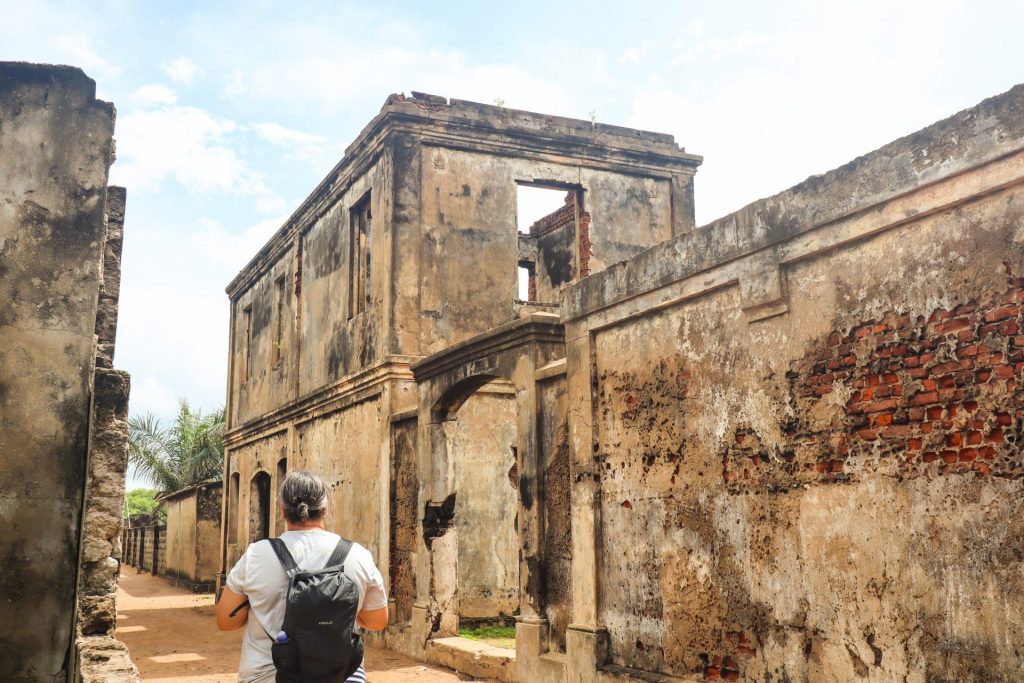


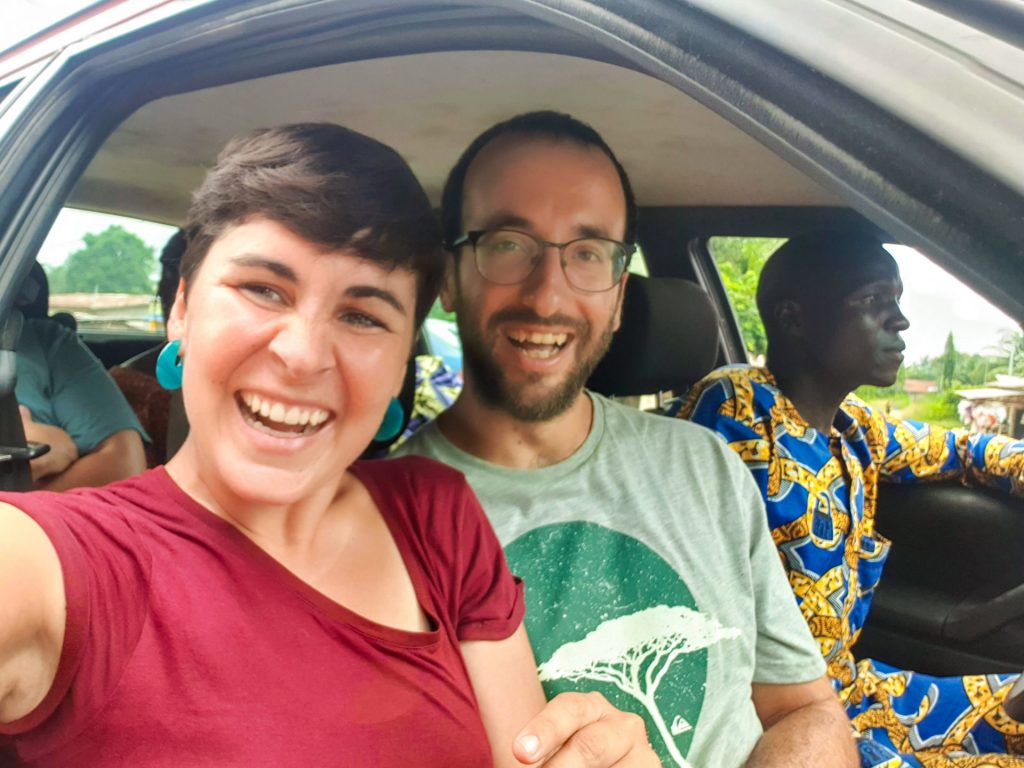
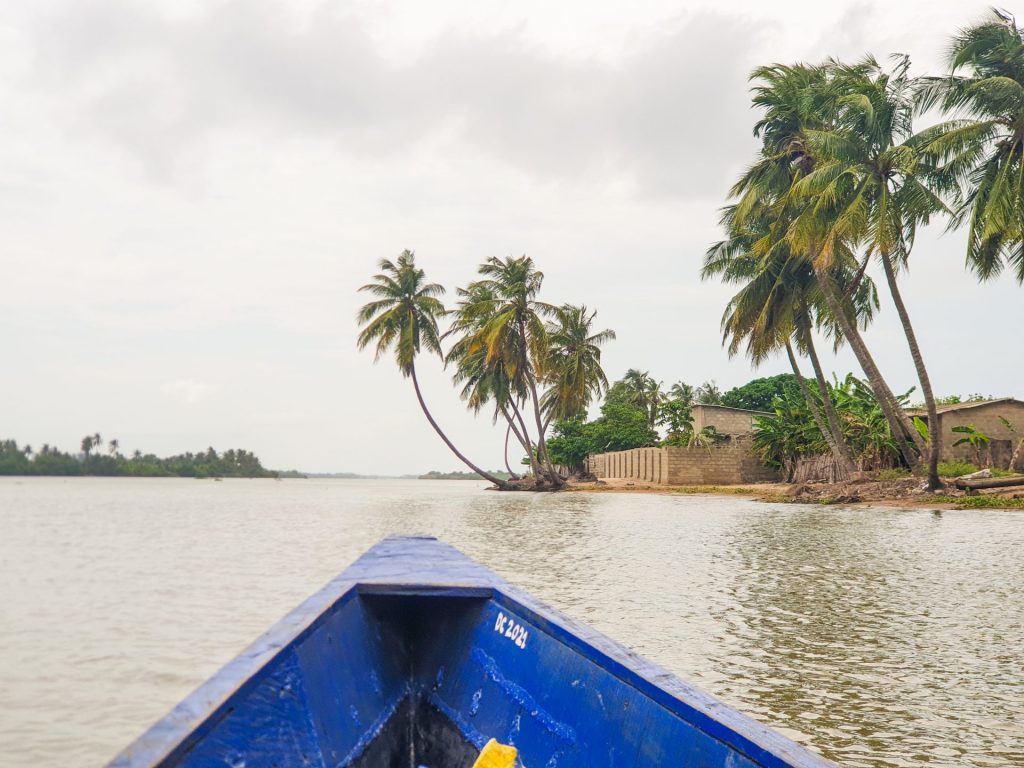

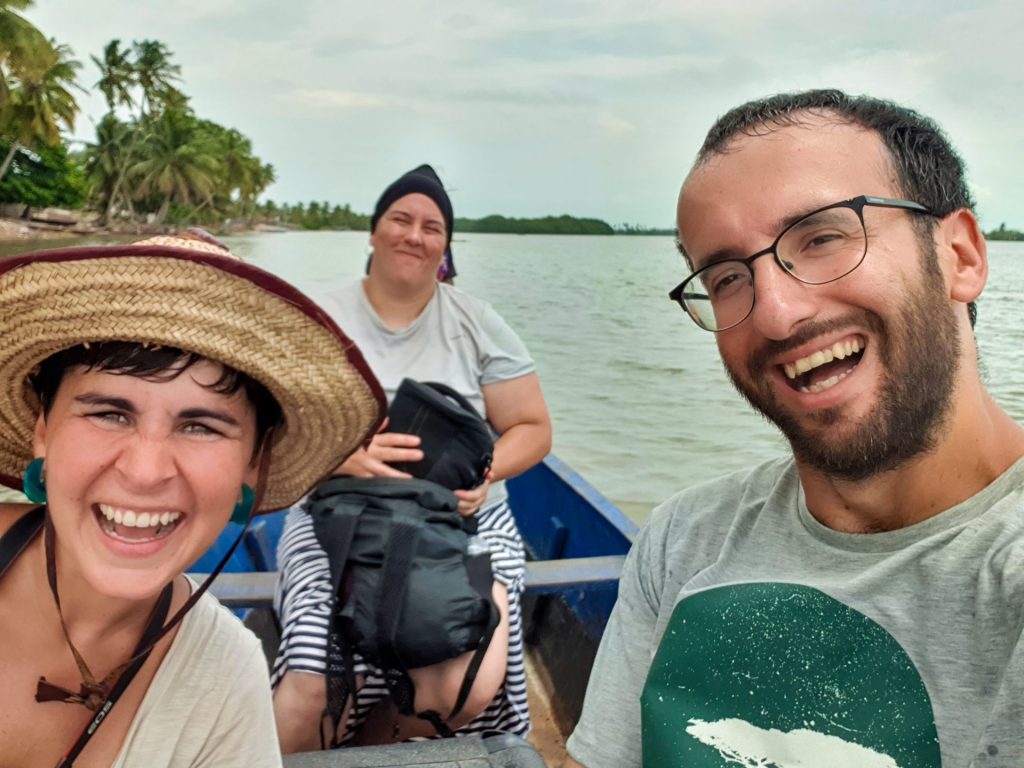
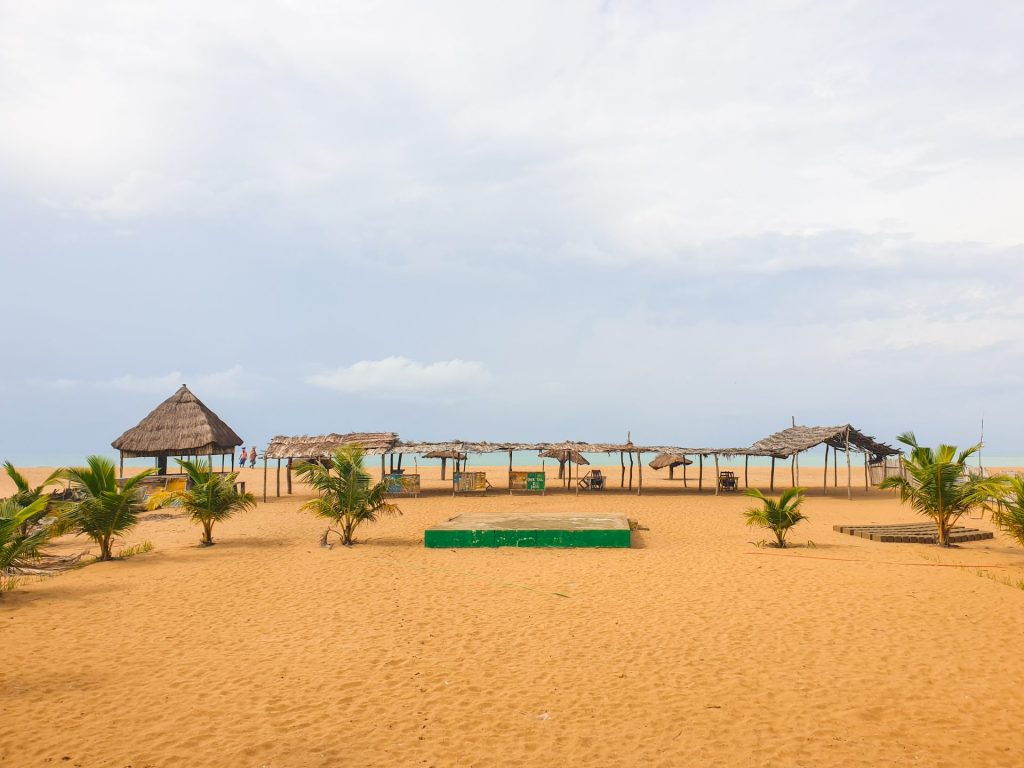
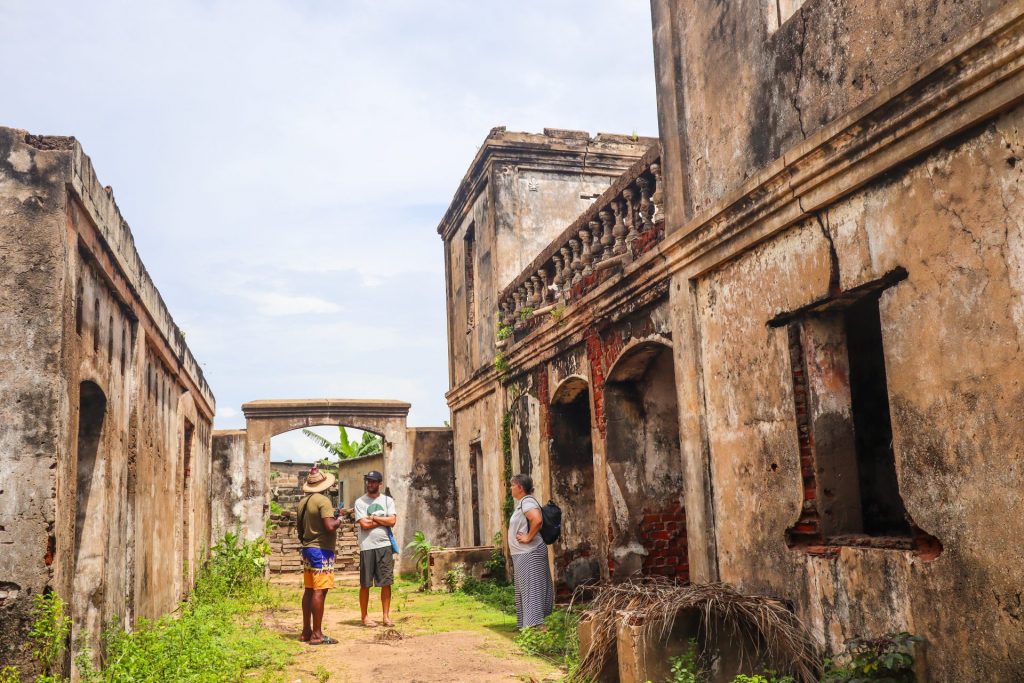

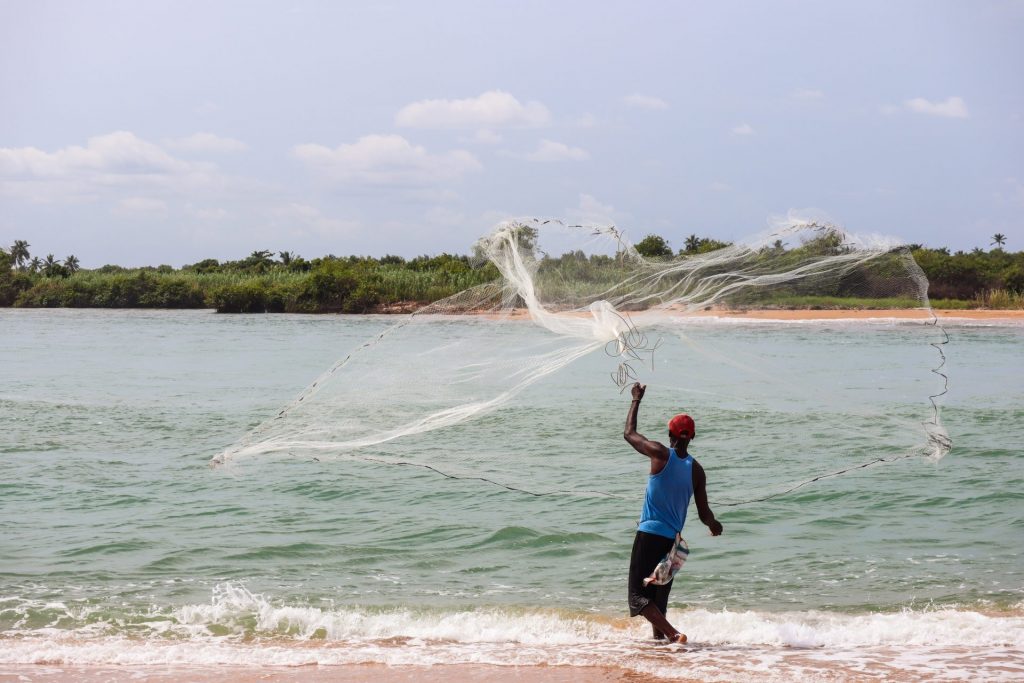
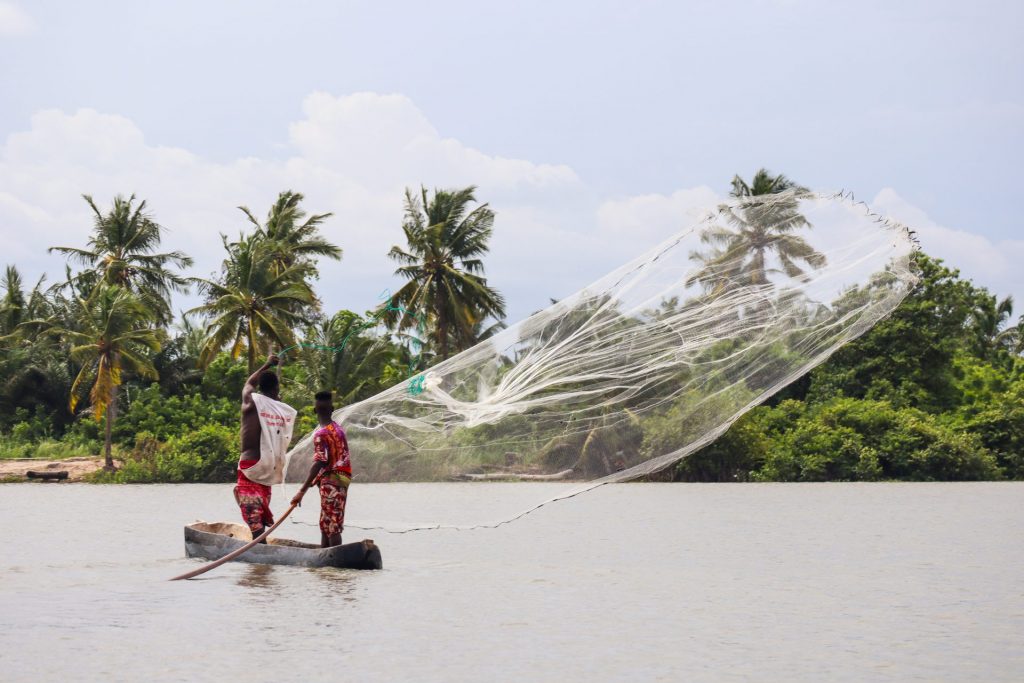
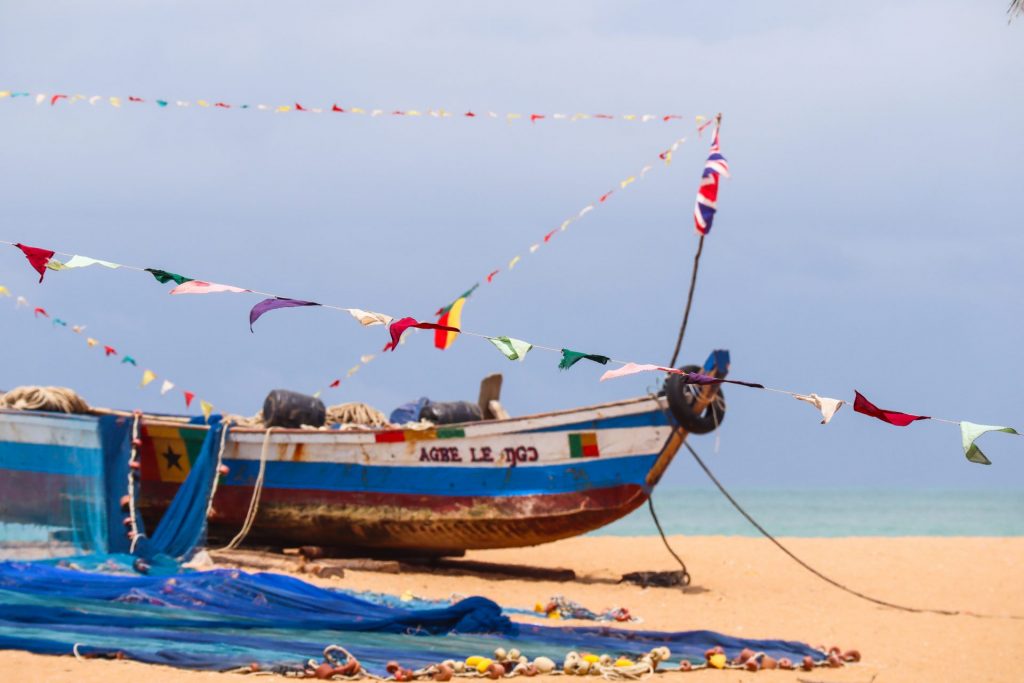
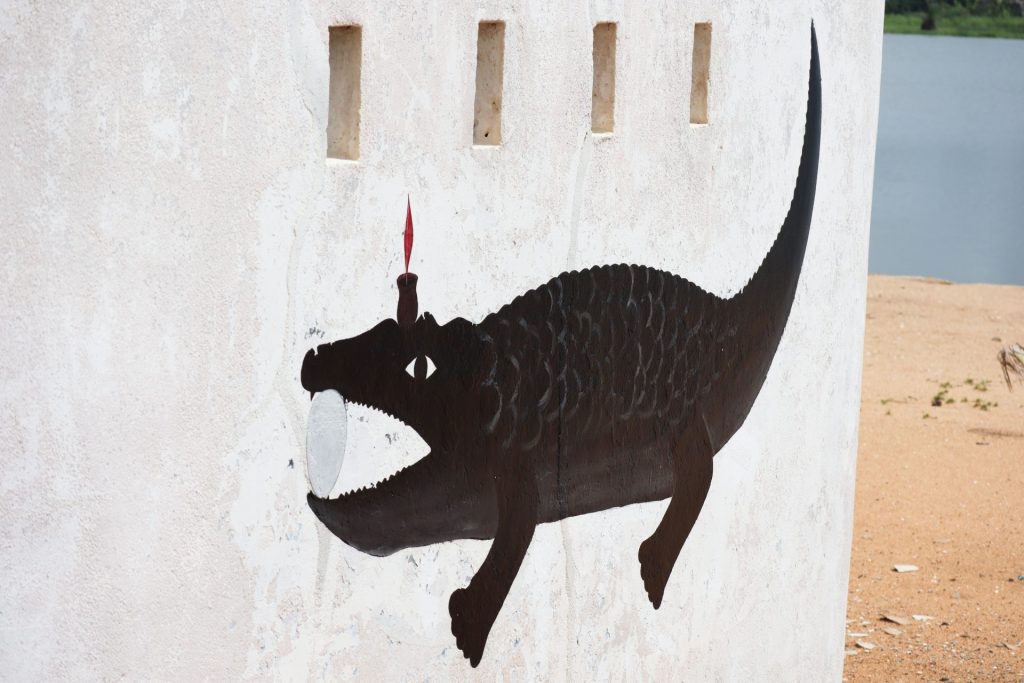






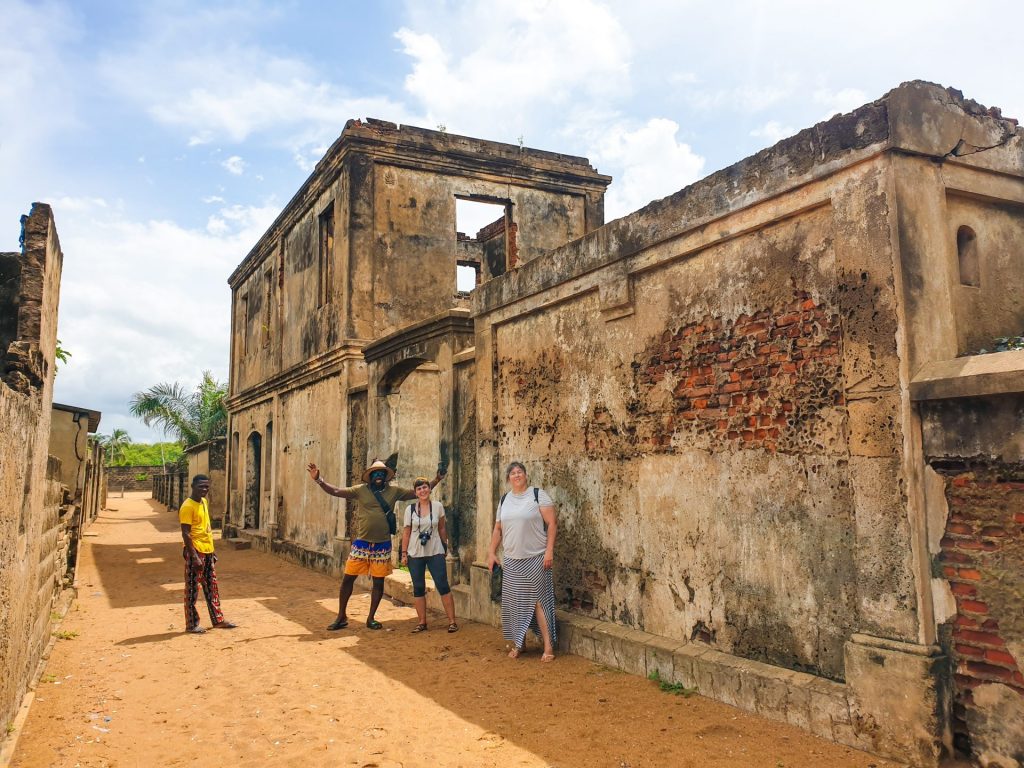
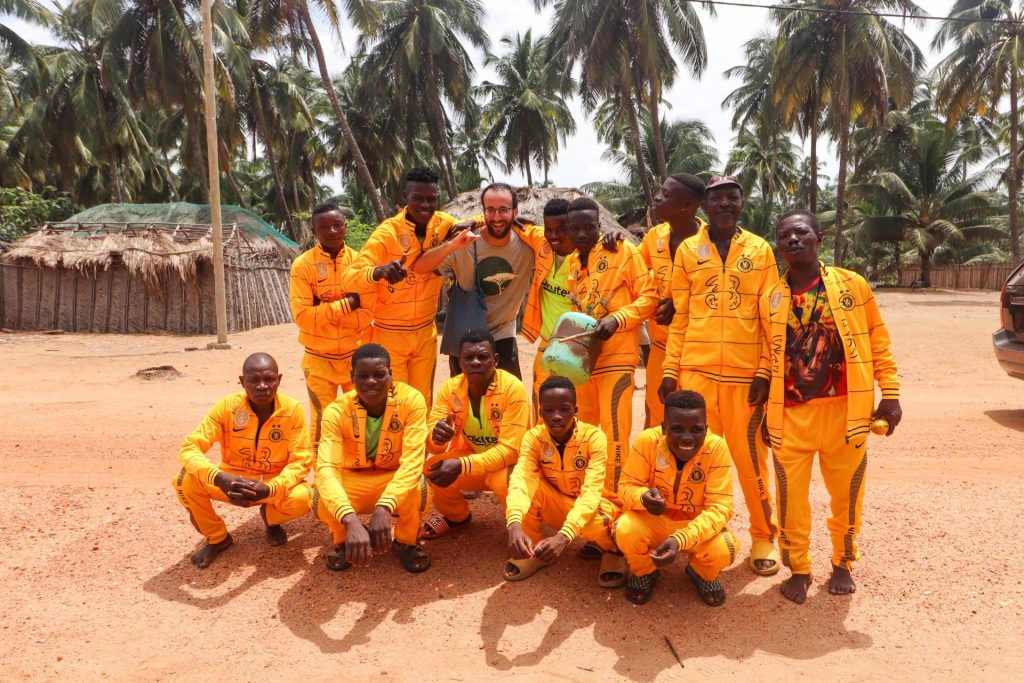

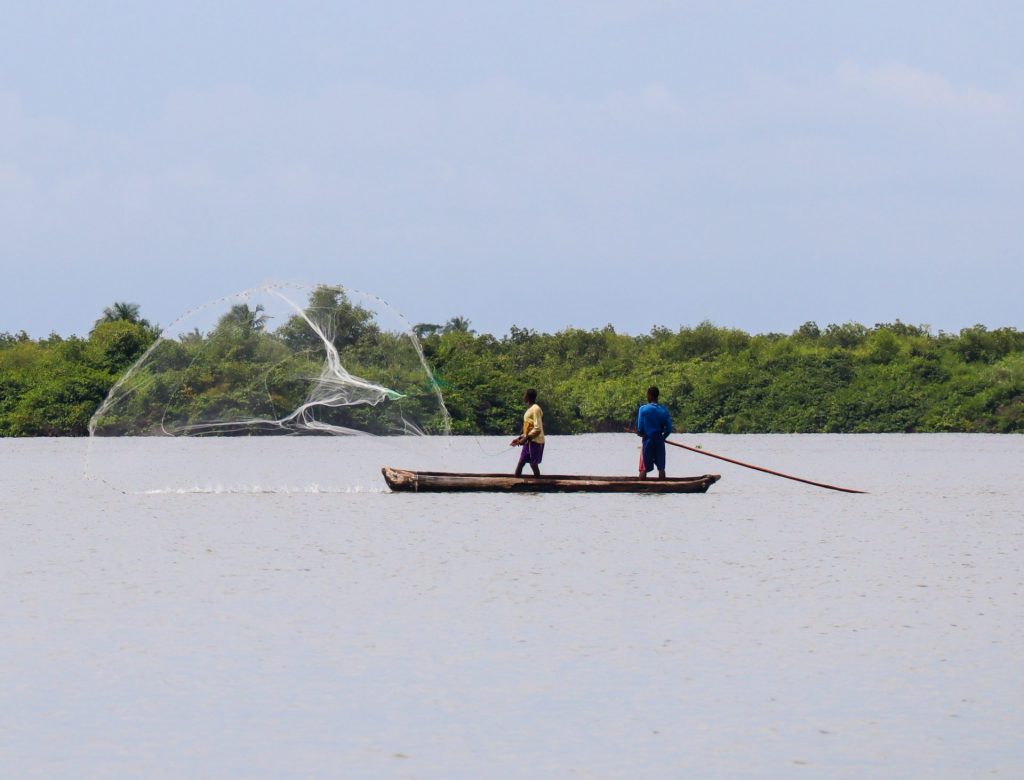
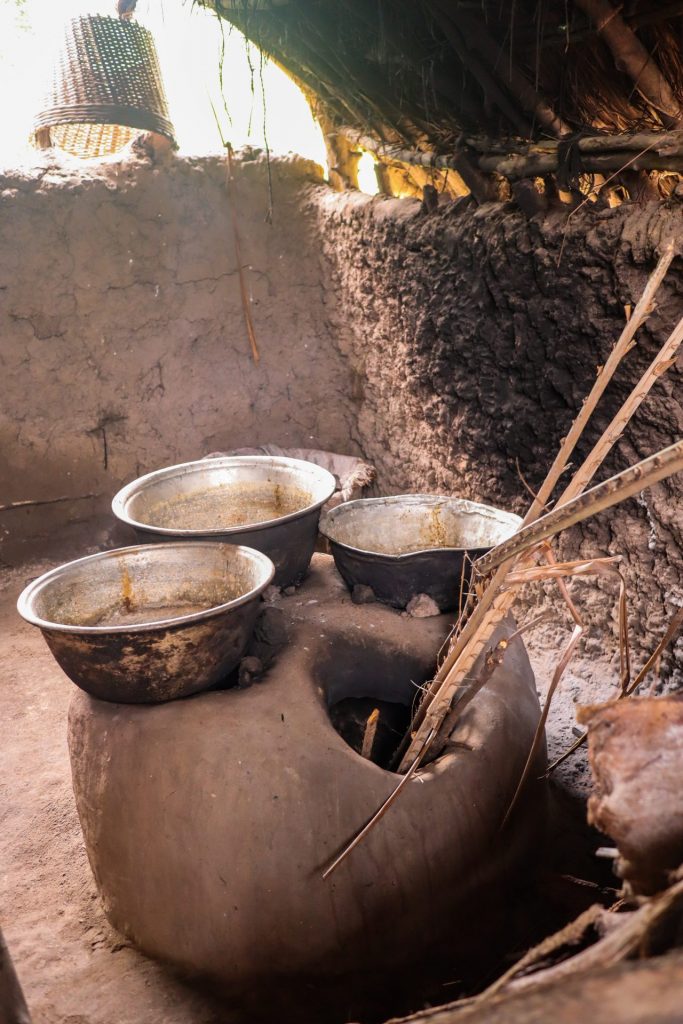
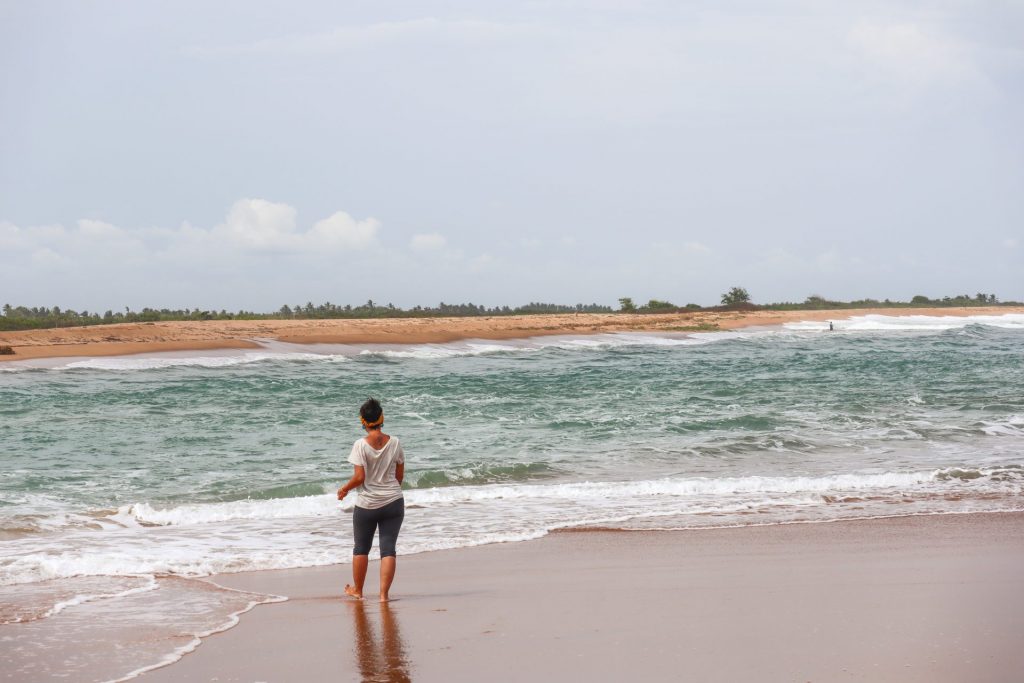


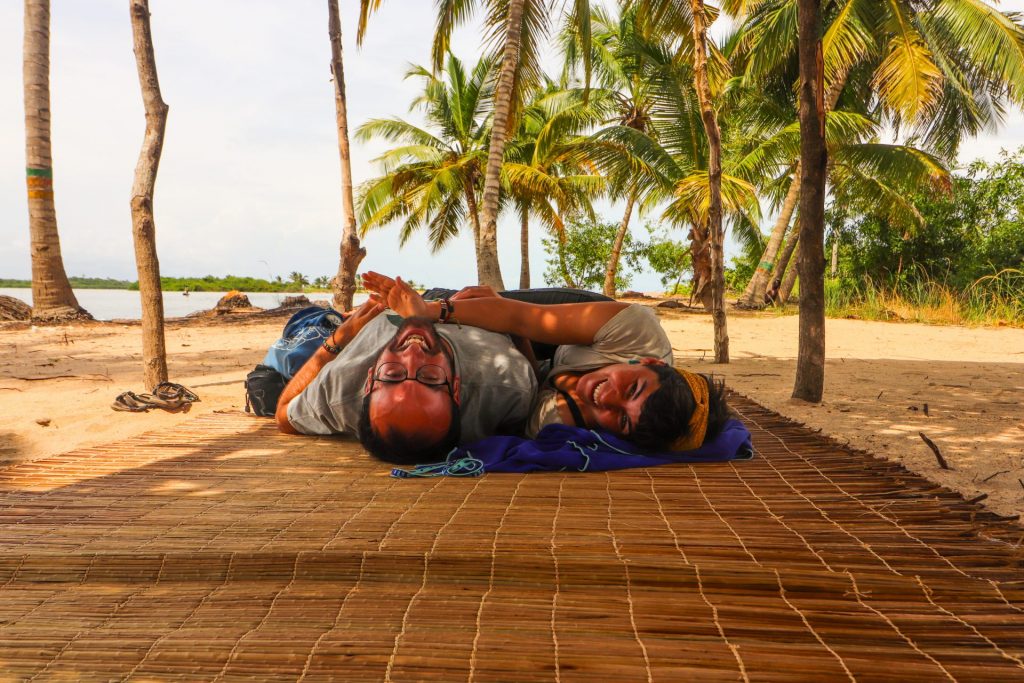

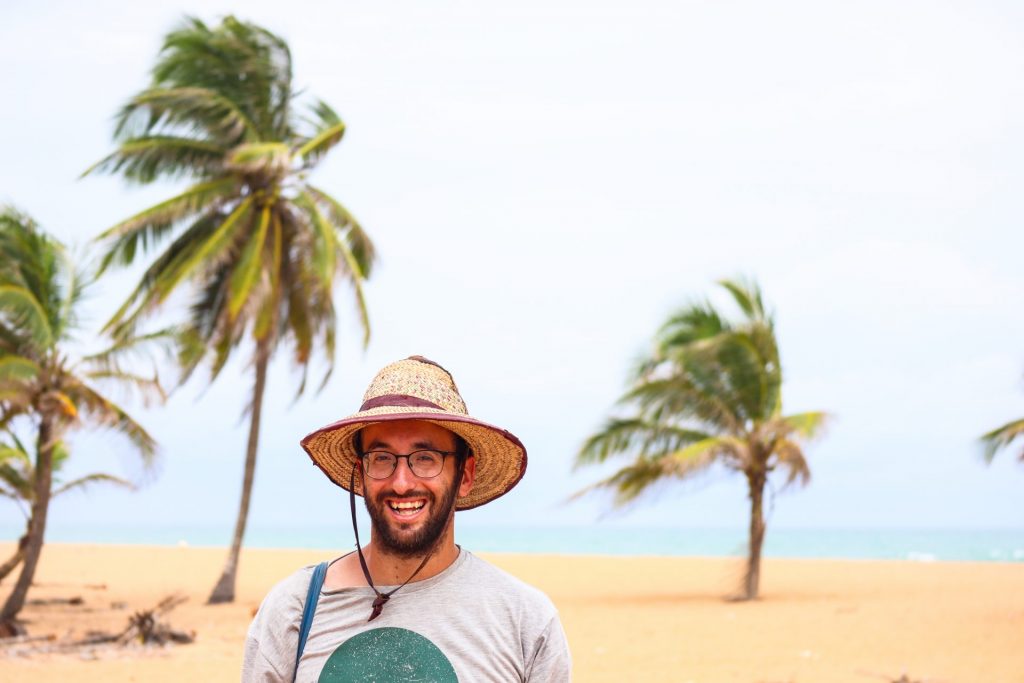

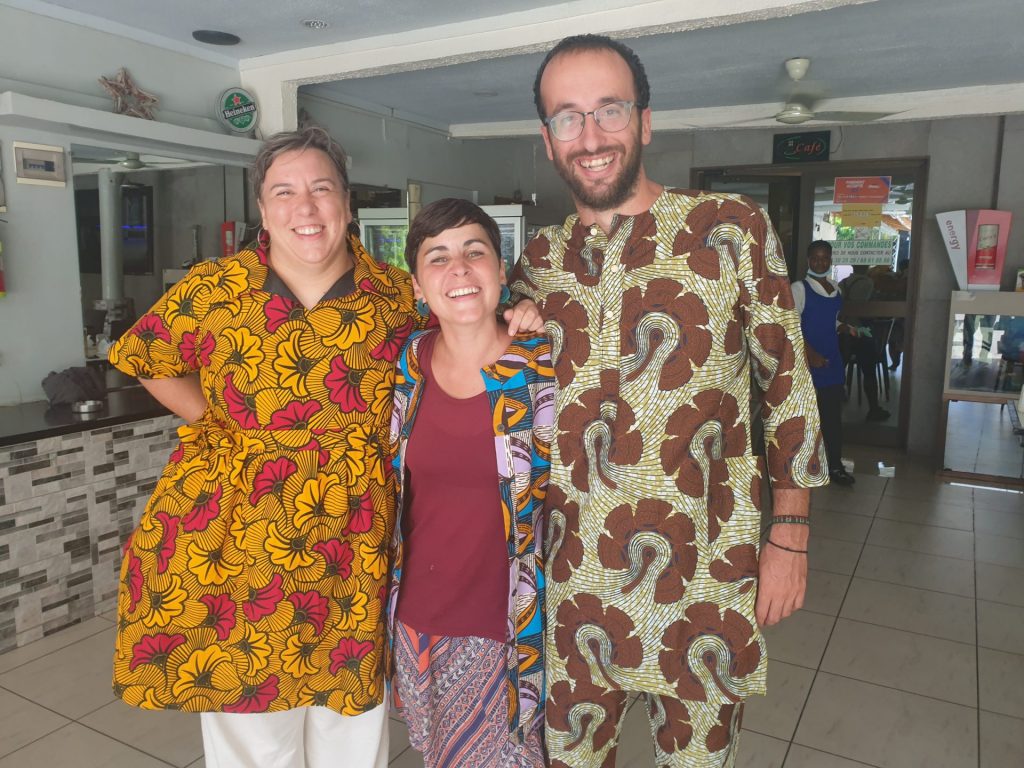


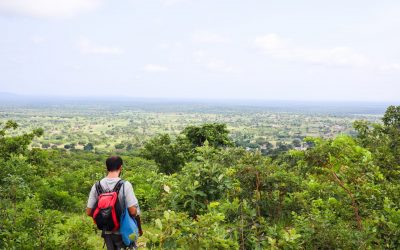

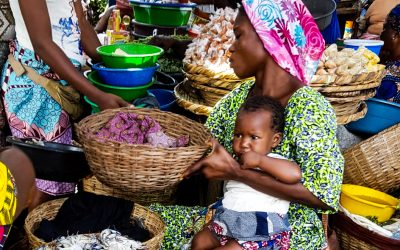
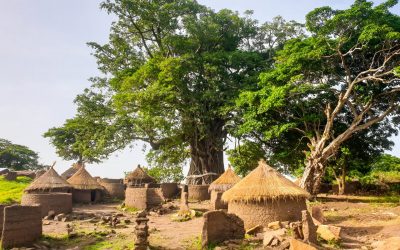

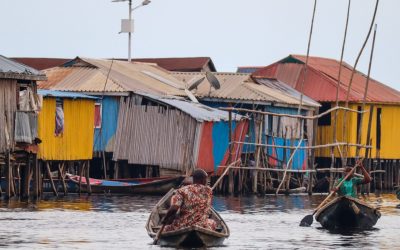
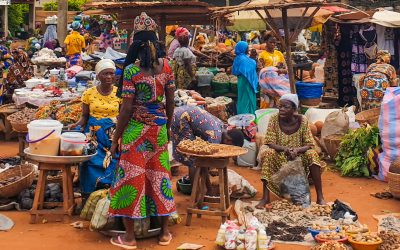
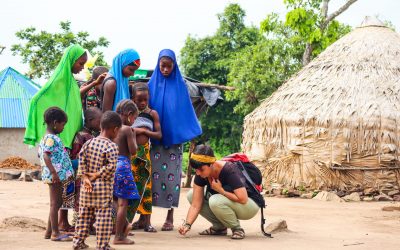
0 Comments